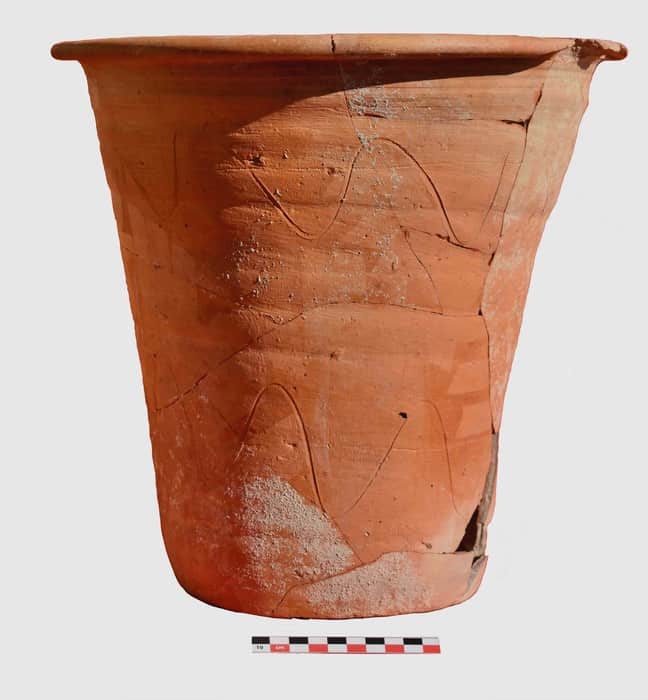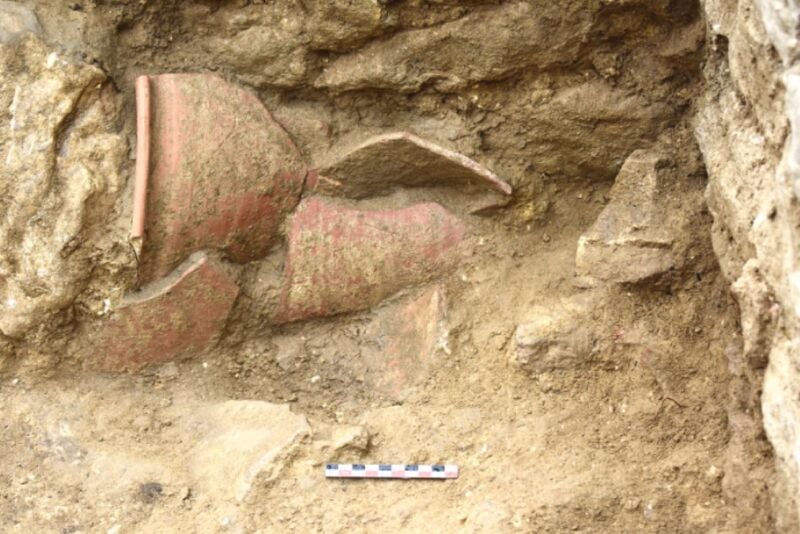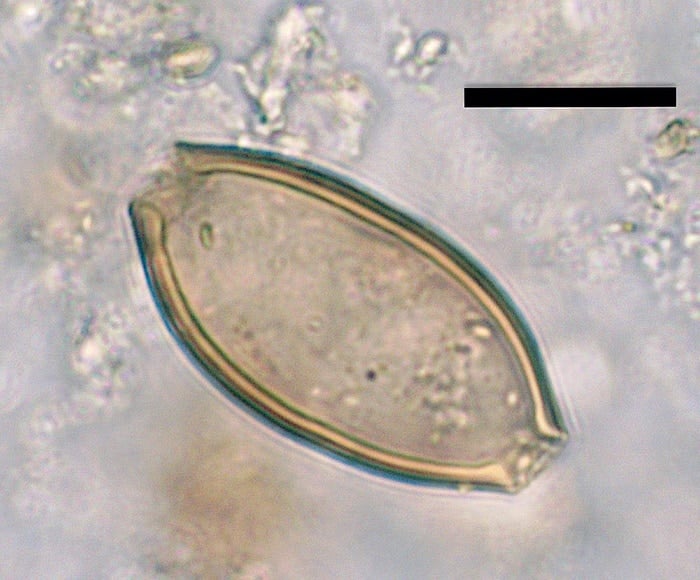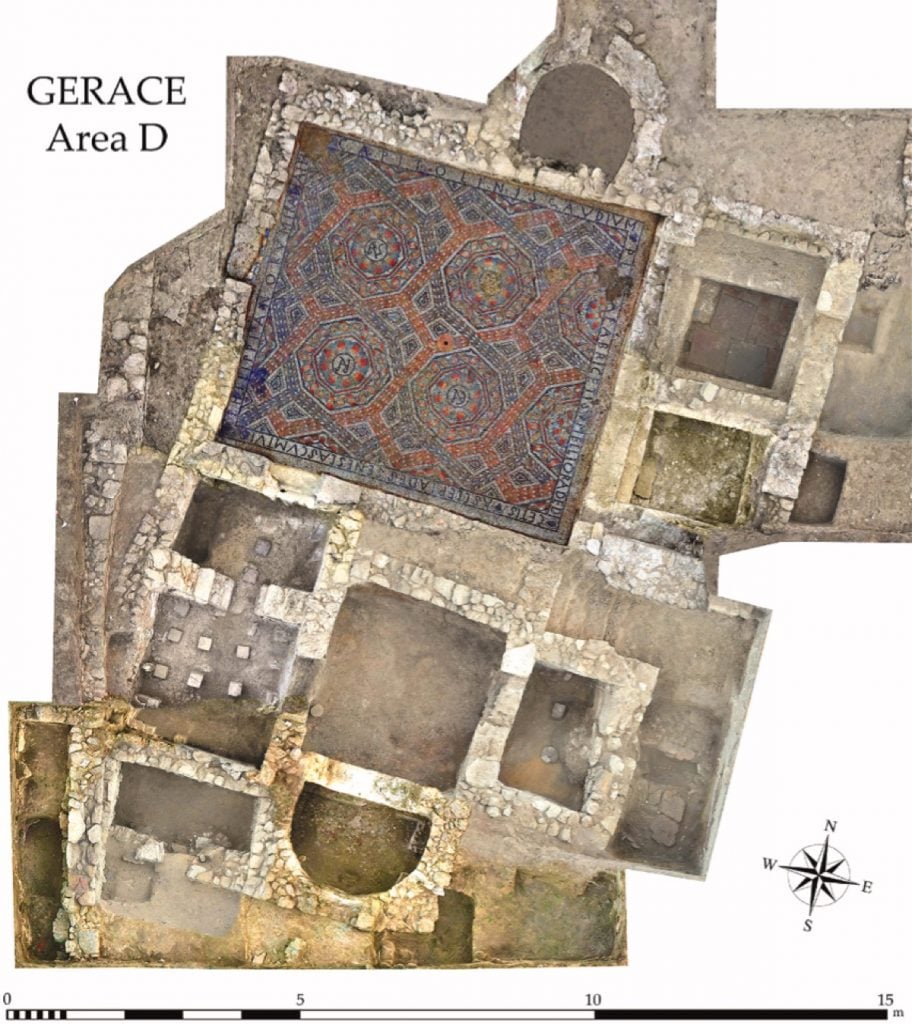Archaeology & History
Ancient Romans Used These Terracotta Vessels as Porta-Potties, Archaeologists Have Discovered
A parasite proved the pot was used for pooping.

A parasite proved the pot was used for pooping.

Archaeologists have often found ancient Roman earthenware containers on their digs, but never knew for sure what they were for. Now, thanks to microscopic analysis of a fifth-century ceramic pot discovered in Sicily, we know that the Romans used terracotta vessels as toilets, confirming a long-held theory.
During a dig at the ruins of a Roman villa near Gerace, Italy, excavators found the shards of a burnt orange pot, minimally decorated with two wavy lines. Fitting the pieces back together, they noticed a crusty material inside the pot and took a sample. They gave it an acid bath that isolated the organic material in the calcified concretions, reports the New York Times, and it was sent to the Cambridge Ancient Parasites Laboratory for analysis.
Examining the mineral formation with microscopy, the team spotted the eggs of an intestinal parasite found only in humans, according to a new study in Journal of Archaeological Science: Reports. This was proof that the jar had once contained human feces, and would have served as a chamber pot.
“We found that the parasite eggs became entrapped within the layers of minerals that formed on the pot surface, preserving them for centuries,” Sophie Rabinow, a graduate student at the University of Cambridge and the paper’s lead author, said in the statement.

A terracotta chamber pot being excavated from a 5th century Roman villa at Gerace, Sicily, Italy. Photo by Roger Wilson.
“Conical pots of this type have been recognized quite widely in the Roman Empire and in the absence of other evidence they have often been called storage jars. The discovery of many in or near public latrines had led to a suggestion that they might have been used as chamber pots, but until now proof has been lacking,” dig director Roger Wilson, a classics professor at the University of British Columbia, added.
Ancient Romans may have sat directly on the pot to relieve themselves—at over a foot tall and wide, it’s big enough—but it’s more likely that it would have been placed beneath a wicker or wooden chair. It was found in the villa’s bath complex, and would have offered an important convenience for visitors to the baths, since the facility lacked a built-in latrine

A microscopic whipworm egg from the Ancient Roman chamber pot. The black scale bar represents 20 micrometers. Photo by Sophie Rabinow.
The pot’s mineralized concretions would have built up in layers over time, leaving behind a residue from the feces and urine. The eggs in the deposit came from a whipworm, or Trichuris trichiura, a parasite about two inches long that lives in the lining of the intestine.
It’s unclear how common such a parasitic infection would have been among the ancient Romans, but more than half the population in today’s developing world host at least one parasite—800 million of them with whipworms, which cause the disease trichuriasis. (Some cases have no symptoms, or just mild diarrhea, but it can lead to cognitive problems among children with severe cases.)

Composite photo of the Gerace bathhouse as excavated between 2016 and 2019. Photo by Lorenzo Zurla.
If many people in ancient Rome suffered in this way, deposits in other excavated vessels could help identify many more chamber pots. And such discoveries could provide scientists valuable information about ancient people’s sanitation, diet, and intestinal health.
“Where Roman pots in museums are noted to have these mineralized concretions inside the base,” study co-author Piers Mitchell, the head of the Ancient Parasites Lab, said, “they can now be sampled using our technique to see if they were also used as chamber pots.”